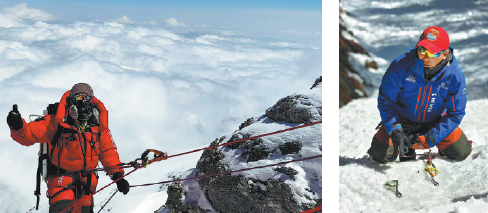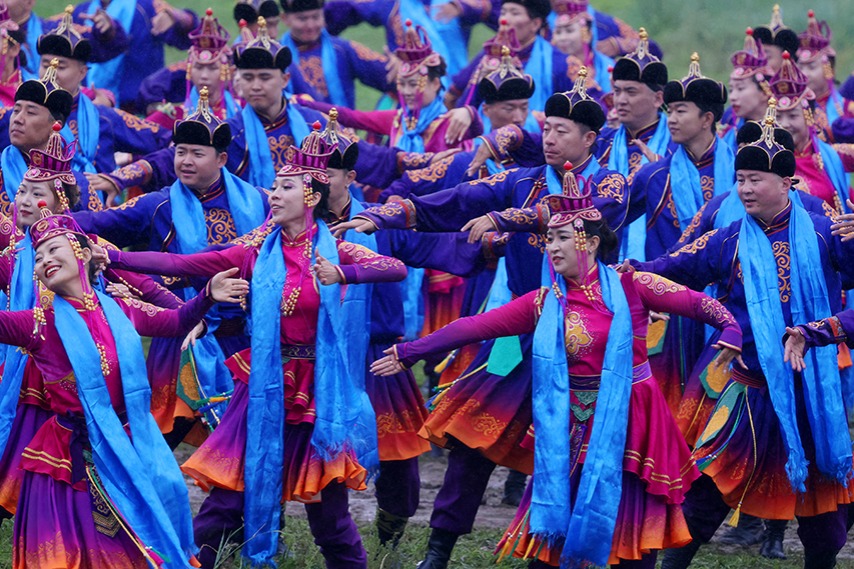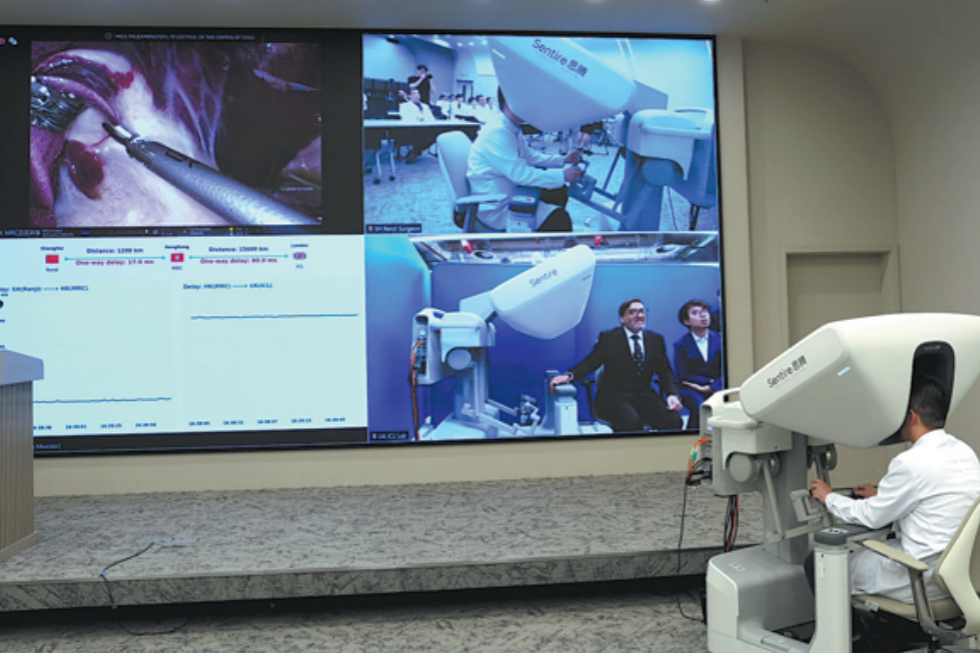Setting ropes and mapping crevasses, brave summiteer keeps fellow valiants safe

Each year before the climbing season, a specialized team organizes Qomolangma's ascent. They brave howling winds to anchor lifelines across jagged cliffs, forging a secure passage for climbers from the four corners of the world. They are the climbing route-fixers up and down Qomolangma — also known as Mount Everest in the West.
Dorji Tsering, deputy leader of the route-fixing team on the north face of Qomolangma, while pointing to the mist-shrouded peak above, said: "Below an altitude of 7,028 meters, the terrain undergoes drastic changes every year after the melting of snow and ice. Therefore, the route needs rerouting each year."
The ropes used in fixing are mostly static ropes with a load capacity of over four metric tons. Although durable, they are replaced annually for safety, he added.
"Setting ropes and ladders on Qomolangma is both critical and dangerous," said Dorji Tsering. "Using bottom-up systems, our team ascends ice walls and rock faces, replacing ropes while mapping crevasses and avalanche terrain — all to pave a safe route for guides and climbers through the mountain's ever-shifting perils."
All the team members have undergone rigorous training at a mountaineering school, where they learned to predict potential avalanches, hidden ice crevasses, rockfalls, icefalls and other skills.
"Experience is a more precise detector than instruments sometimes — hidden crevasses often masquerade as flat snow surfaces, with only subtle indents hinting at the deadly traps beneath."
The team members are selected from guides who excel in physical fitness and technical skills, capable of undertaking the crucial task of fixing routes, Dorji Tsering said.
While fixing routes, each member carries a 200-300 meter-long rope weighing 8-12 kilograms, along with specialized equipment like ice screws and ice axes. Their overall burdens tip the scales at about 25 kg as they advance from an altitude of 6,600 meters toward the summit at 8,848 meters.
In addition to experience, they employ various methods to facilitate the route-fixing process. The team starts from 7,028 meters and secures a route up to 7,790 meters. Supplies like oxygen tanks are then delivered to the 7,790-meter level along the route. The team rests and uses oxygen as needed. They then continue to 8,300 meters, with supplies delivered again later, advancing in cycles, Dorji Tsering explained.
For the route, Dorji Tsering said it must be fixed well as many climbers from China and abroad will follow it to the summit. The professionalism of China's fixing team is thus showcased to climbers worldwide.
As deputy leader, Dorji Tsering faces immense pressure and decision-making responsibilities beyond basic route-fixing tasks.
"After noon, the weather on the mountain can change abruptly. Every decision impacts the fate of the entire team," said Dorji Tsering.
In selecting team members, Dorji Tsering said integrity is the foremost criterion. High-altitude route-fixing relies on team cooperation. Any individual acting against commands or operating alone can jeopardize the entire team's safety. Therefore, candidates are usually observed for two to three years in advance.
Dorji Tsering said one of his duties is to keep a close watch on every member of the team during the fixing process.
In the deadly zone with oxygen levels less than one-third that at street level in Beijing, he silently assesses their physical limitations through the speed of their eye focus, the extent of the purpling of their lips and the strength of their voices. If any signs of overexertion are detected, emergency measures will be immediately taken.
Dorji Tsering, though he has reached the summit of Qomolangma 18 times, maintains a reverent attitude.
"Individual heroism is unacceptable, and the safety line must not be crossed."
That being said, fixing the route is still a life-threatening job. To avoid worrying their families, team members often conceal their work schedule from them and finish their job without much fanfare, Dorji Tsering said, adding that in reports about climbing Qomolangma, the fixing team often goes unnoticed. When reaching the summit, they receive no accolades from the world and can only quietly feel proud of their accomplishments.
Dorji Tsering's journey with the fixing team began in 2006 when he ascended Qomolangma as a guide with a foreign team, and was impressed by the fixing team's professionalism. The team leader admired his physical capabilities and encouraged him to enhance his skills.
After around two years of preparation, he joined the team in 2007.Driven by passion and perseverance, he became the deputy leader in 2020.

Today's Top News
- Premier announces construction of Yarlung Zangbo hydropower project
- Digital countryside fueling reverse urbanization
- 'Sky Eye' helps unlock mysteries of the universe
- China offers LAC development dividend
- Future sectors to receive more play
- Nation sets its sights on export boost






























